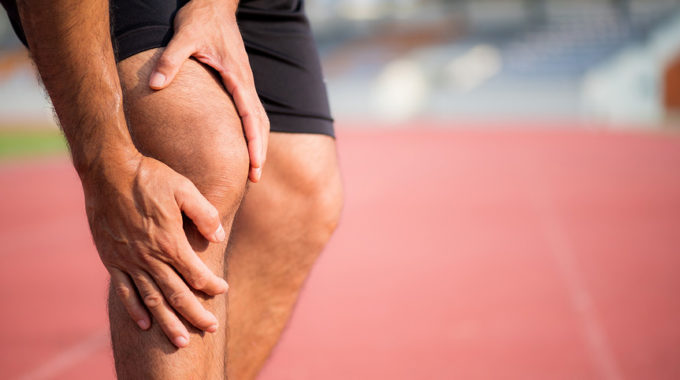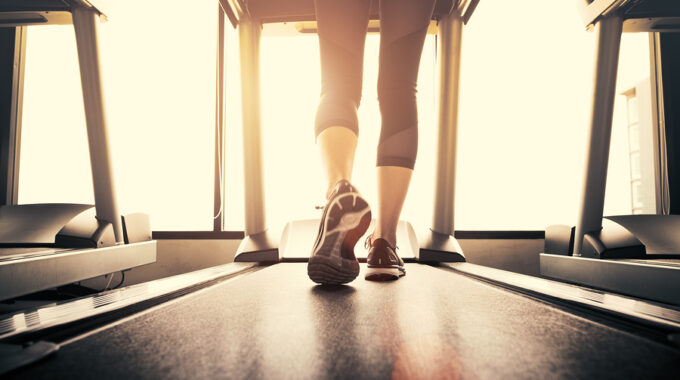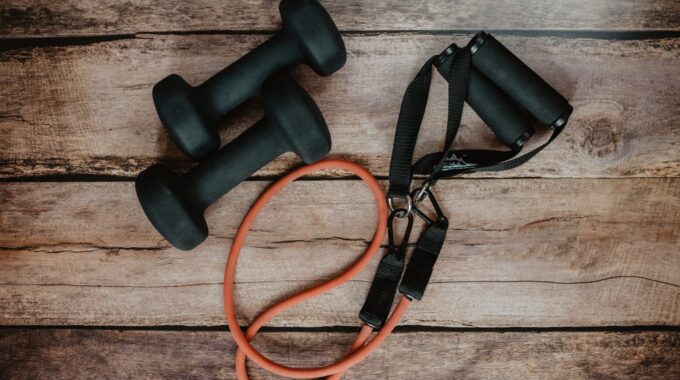Does Stretching Actually Benefit Us? The idea that we should stretch our muscles before…

Runners Knee/PFPS

Patellofemoral Pain Syndrome (PFPS) or more commonly known as “Runner’s Knee” is a syndrome characterised by pain around/under the knee cap.
Runner’s Knee is not actually something that only happens to runners (just as “Tennis Elbow” is very often unrelated to tennis) and can happen to people of all shapes, sizes and ages.
There are also several different conditions that can cause pain around the knee cap and front of knee, of which Runner’s Knee is only one. So it is best to get your symptoms checked by a professional and receive a diagnosis and plan before starting any rehab programme, as you may indeed make it worse.
Who does it affect?
Women : Men = 2 : 1
(According to the British Journal of Sports Medicine)
Women seem to be more affected than men partly due to the fact that women tend to have an increased Q angle (which is essentially the angle between the hips and the knees). Those with wider hips in relation to the knee will have increased Q angles which may increase the stress exerted on the kneecap during motion.
What are the symptoms?
Runner’s Knee can result in the following symptoms:
-
Kneecap pain (i.e. retropatellar – the joint surface behind the kneecap).
-
Pain that is most obvious during activities that require knee flexion and forceful contraction of the quadriceps.
-
Pain when standing from sitting (especially after long periods).
-
Pain when going down stairs more than up stairs.
-
Crepitus (creaking/clicking/grinding sensation behind the knee cap).
-
Occasionally swelling if more severe.
Runner’s Knee/PFPS has also been referred to as “cinema goer’s knee” due to pain often presenting when sat with knees bent (the longer the knee remains bent the worse the symptoms tend to get).
What causes it?
Often Runner’s Knee can be attributed to poor lower limb biomechanics, in other words our ability (or lack of ability) to maintain good bodily structure and subsequently control during movement.
Here are some factors that contribute to poor mechanics:
Muscular imbalance:

-
This can occur as a result of an old injury, postural habits, lack of
stretching/strengthening etc.
-
The main muscle imbalances we tend to see clinically in Runner’s Knee are hamstring, quads and calf tightness as well as quads/gluteal weakness (especially lateral rotators of the hip including gluteus medius).
-
The gluteals act in part to stabilise the hip and lower limb in order to minimise abnormal stress further down or up the body (such as in your back, knees, ankles and feet).
-
If the gluteals are not strong enough, other accessory muscles of the hip (including tensor fascia latae (TFL) ) may become tight through overuse as it works hard to assist in hip movement.
-
TFL attaches into the Iliotibial band (ITB) which then attaches into the side of the knee, and if tight can increase pressure on structures on the outside of
the knee. In turn this can alter knee cap movement and alignment and cause pain.
Variation in patella size/shape:
-
Anatomical variations can have an effect on patellofemoral joint function and can increase the likelihood of acquiring Runner’s Knee.
Prevention: Can I avoid it in the first place?
By regularly stretching and doing strength/stability exercises, you can help to reduce abnormal loading on the lower limb during motion. This can help to reduce the likelihood of experiencing knee pain as well as encourage repair if suffering with pain.
Incorporate a regular strengthening program featuring exercises for improving lower limb strength (calves, hamstrings, quads) as well as core and gluteal strength.
Both stretching and strengthening will be discussed in more depth below.
Many exercises exist for improving lower limb and core stability, however these are some simple ones that can make a significant difference:
1. Bridge/spine curl
2. Superman (sometimes known as the bird-dog)
3. Clamshell
4. Squats
5. Lunges
NB: If you experience any pain during any of the exercises make sure to consult your physio for more information as they may need to tailor the programme to your specific injury requirements.
Regular strength exercises can reduce muscular imbalances and help to prevent strain on the knee.
Treatment: If I get it, what should I do?
STRETCH MORE
It has been suggested that static stretches can improve muscle flexibility, especially when performed for more than 30 seconds and consistently. My recommendations for static stretching vary for each individual but are generally given in sets of 45-60 secs repeated 4x following exercise and at least 5x per week.
It has also been suggested that long term static stretching can improve muscle strength as opposed to just mobility.
Before you run, use dynamic stretches rather than static ones. Stretching before running/exercise has been well discussed over the years and the general consensus is that static stretches are not beneficial, and may even increase the chance of injury and reduce performance. Dynamic stretches, on the other hand, have been shown to have no adverse effects pre-exercise and may slightly improve performance.
For Runner’s Knee specifically, I recommend hamstring, quads and calf stretches.
SHOES
After 300-350 miles or so your trainers will probably need changing as they will be worn and will be providing less support than they should. Remember that even if the external surface of the shoe is not worn, it doesn’t mean the internal support hasn’t reduced.
MILEAGE
At the first sign of pain, cut back your mileage. The sooner you lessen the knee’s workload, the faster healing begins. Avoiding knee-bending activities that cause pain is key.
PHYSIOTHERAPY
A physiotherapist will be able to advise you on the best approach for you to take as an individual (much better and more specific to you than trying to apply information you have found via Google!). A physio will also give you your own programme of exercises to develop strength in the areas you most need it, while being careful not to over-stress any injuries.
Research suggests that reduced lateral hip rotator strength (e.g. gluteus medius) when compared with internal rotator strength may increase the likelihood of pain associated with Runner’s Knee. Physios therefore will often recommend a strengthening programme for the lateral rotators (a simple example being a clam/oyster exercise).
These hip strengthening exercises will gradually be progressed and adapted to become more dynamic in nature, since running is indeed active. Simply giving static exercises will help but they need to be progressed to suit the demands of the sport.
Other exercises that we often suggest for Runner’s Knee are core exercises, again starting with simple stability exercises and then progressing to exercises that combine several different functional movements.
Manual therapy can also help to alter abnormal muscle function, and help to correct lower limb and back alignment.
ORTHOSES
Before we start talking about flat feet and over-pronation, it is important to note that pronation is a key and important part of the gait cycle and indeed normal!
Problems may occur when you excessively pronate as this can result in internal (inward) rotation of the tibia (shin bone) which can alter the position of the knee and hip, leading to weakness in the hip and an increased Q angle (angle between hip and knee) which we can link to Runner’s Knee.
Orthoses/insoles can help to encourage correct force to be translated through the foot and ankle, and up into the lower limb during motion, which in turn can improve the forces translating through the knee. A physio will be able to look at your gait and advise on whether orthoses are likely to be helpful for you.
Orthoses are not necessarily permanent and can allow muscles in your lower limb to work more effectively.
If you suffer from knee pain and want to come along and see what can be done please call me (Luke) on 01799530650 or my mobile which is 07399499959 and I will be happy to help!
A bit about Reform:
Reform Physiotherapy is based in Little Chesterford, near Saffron Walden, Essex. We have plenty free parking outside the front door and are open Monday to Friday from 9-5 with Early Morning and Evening appointments available on request.



